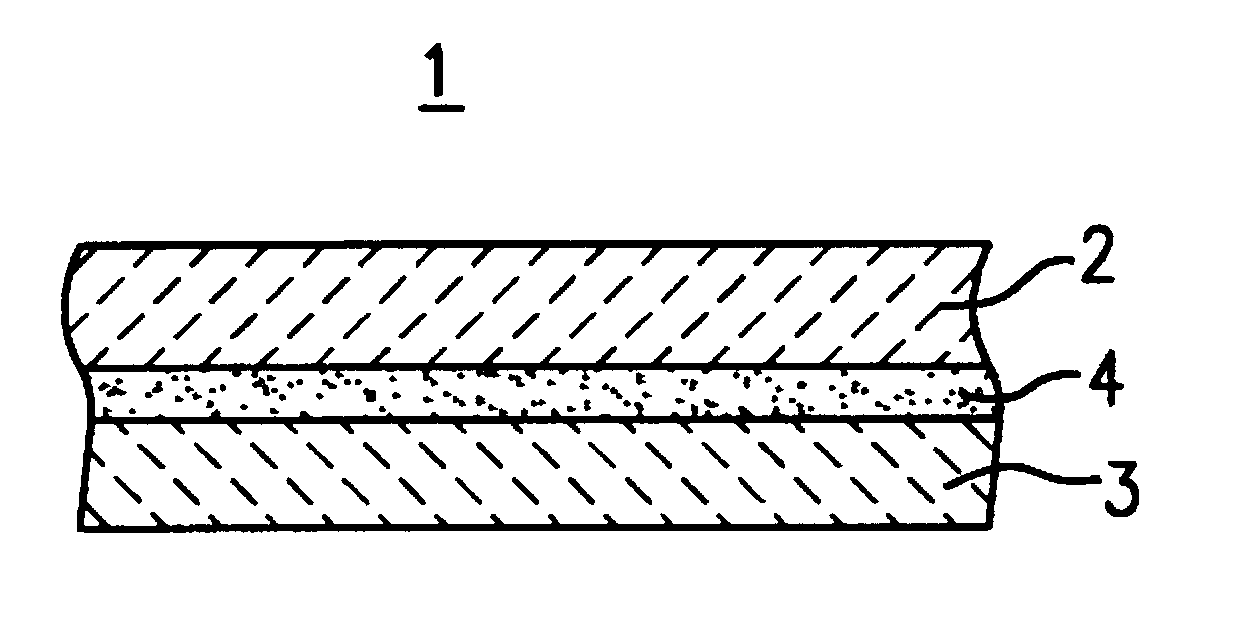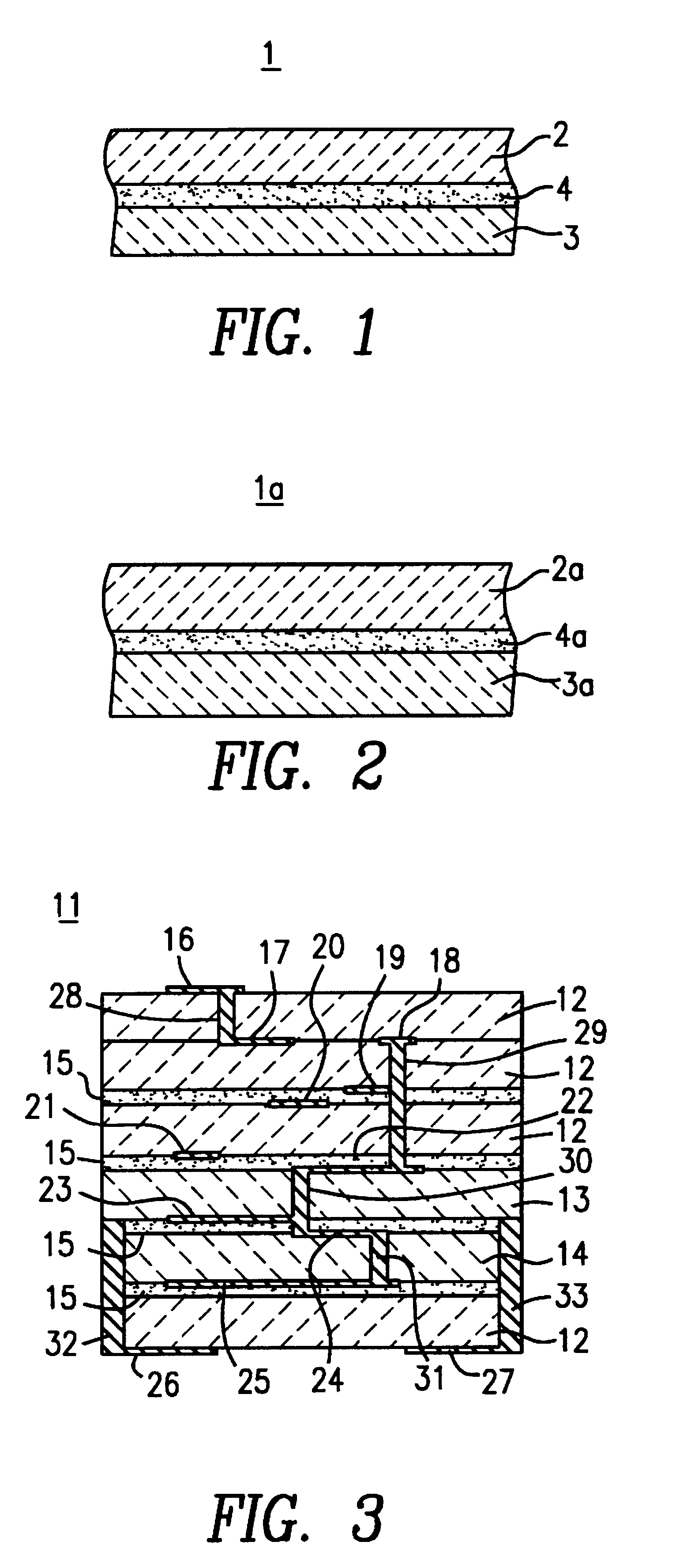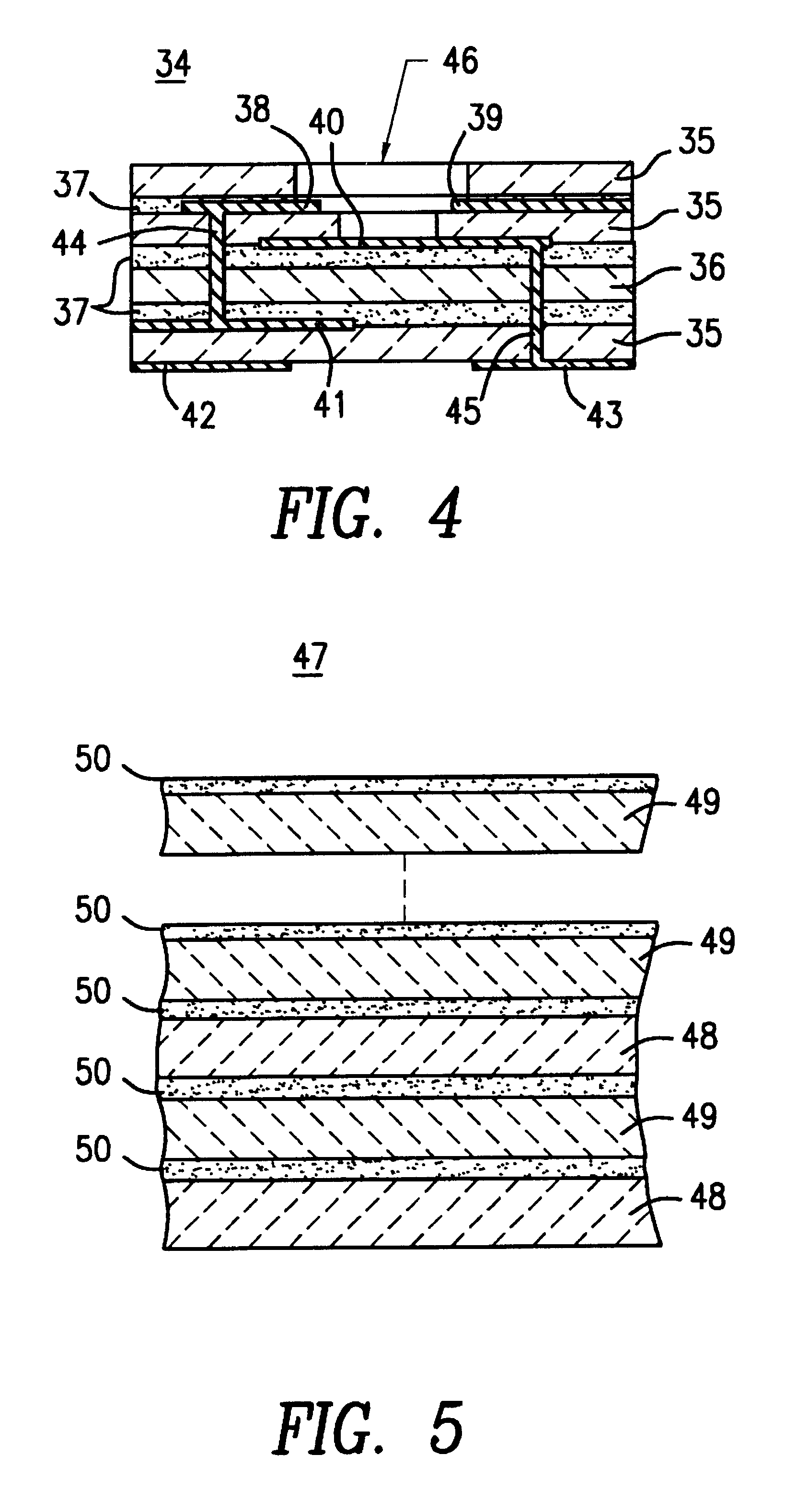Multilayered ceramic substrate and method of producing the same
a multi-layer ceramic and substrate technology, applied in the field of multi-layer ceramic substrates, can solve the problems of deterioration or change of various characteristics, need to add glass or the like to the intermediate layer, deterioration of multi-layer ceramic substrate characteristics,
- Summary
- Abstract
- Description
- Claims
- Application Information
AI Technical Summary
Benefits of technology
Problems solved by technology
Method used
Image
Examples
Embodiment Construction
FIG. 1 is a sectional view showing a portion of a multilayered ceramic substrate 1 in accordance with an embodiment of the present invention. FIG. 2 is a sectional view schematically showing a portion of a green composite laminated product 1a prepared for obtaining the multilayered ceramic substrate 1 shown in FIG. 1. In FIGS. 1 and 2, wiring conductors are not shown for the sake of simplifying description.
Referring to FIG. 1, the multilayered ceramic substrate 1 comprises two layers, i.e., first and second substrate ceramic layers 2 and 3 containing first and second different low-temperature sintered ceramic materials, respectively.
The multilayered ceramic substrate 1 further comprises a shrinkage inhibiting layer 4 arranged between the first and second substrate ceramic layers 2 and 3. The shrinkage inhibiting layer 4 contains an inorganic material in an unsintered state, and which does not sinter at the sintering temperature of each of the first and second low-temperature sintere...
PUM
| Property | Measurement | Unit |
|---|---|---|
| temperature | aaaaa | aaaaa |
| thickness | aaaaa | aaaaa |
| thickness | aaaaa | aaaaa |
Abstract
Description
Claims
Application Information
 Login to View More
Login to View More - R&D
- Intellectual Property
- Life Sciences
- Materials
- Tech Scout
- Unparalleled Data Quality
- Higher Quality Content
- 60% Fewer Hallucinations
Browse by: Latest US Patents, China's latest patents, Technical Efficacy Thesaurus, Application Domain, Technology Topic, Popular Technical Reports.
© 2025 PatSnap. All rights reserved.Legal|Privacy policy|Modern Slavery Act Transparency Statement|Sitemap|About US| Contact US: help@patsnap.com



